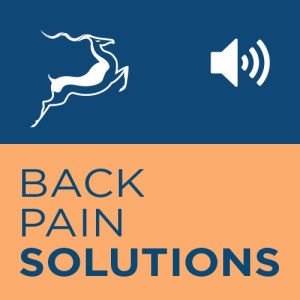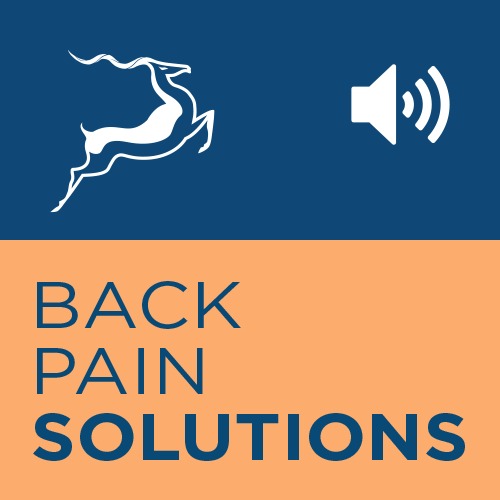Episodes

Thursday Sep 24, 2020
Thursday Sep 24, 2020
Alongside mechanical lower back pain there are several conditions that result in pain, and stiffness, in the back which need to be considered during diagnosis. One condition which targets the lower back specifically is ankylosing spondylitis. Ankylosing spondylitis is a progressive form of inflammatory arthritis which mainly affects the spine but can also affect other joints, tendons and ligaments. It’s a condition that affects young people with symptoms starting in the late teens to early twenties, and with the average age of onset being 24.The current average delay to diagnosis from when symptoms start is 8.5 years, by which time irreversible damage to the spine may have occurred! As a result, early conservative management of people with suspected AS is important.
In this episode we discuss the aetiology of ankylosing spondylitis and the common symptoms that are experienced by those suffering from this condition. We highlight the common investigations involved in diagnosing AS as well as the long-term prognosis of the disease. In addition, we discuss a pro-active approach to managing AS which includes the use of exercise as well as diet in the management of disease progression. Whilst there is limited scientific support for the dietary management of AS, improving gut health, and nutrition are proving increasingly important in the management of chronic inflammatory conditions. Given the average time to diagnosis, and the irreversible changes that will have occurred at that timepoint, we discuss the potential role that diet could play in the proactive management of this condition. Finally, we introduce a case study highlighting successful disease management by a lady who made specific dietary choices, as well as other lifestyle decisions, in support of her condition.
Some of the things you’ll discover…
- What is ankylosing spondylitis and what are the symptoms to be aware of?
- How is ankylosing spondylitis diagnosed, and what is the time to diagnosis?
- Radiographic versus non radiographic AS. What is the difference between the two?
- What is the average age of onset of ankylosing spondylitis and is it influenced by gender?
- Who is likely to manage the condition and what is the approach to disease management?
- Can exercise play a role and what considerations should be made with regards exercise prescription?
- Could diet play a role in the prevention, as well as management of ankylosing spondylitis?
Highlights
The average time to diagnosis of ankylosing spondylitis is 8.5 years and it is a progressive condition. Given this timeline there must be a big focus on the conservative management of this condition, as early as possible. Whilst nutritional research around the management of ankylosing spondylitis is limited, there is anecdotal evidence that it can play a role in the management of this condition. There are several success stories that have been shared online that support the impact nutrition can have on limiting disease progress. Whilst the recommendation is to follow the advice of your doctor it would certainly make sense to consider all options, especially given the duration of time it takes for a diagnosis to be made! Don’t waste time waiting for the diagnosis, take action!
For more episodes of the Back Pain Solutions podcast visit: www.smartstrong.co.uk Don’t forget to subscribe so you can receive updates on new episodes and direct links to additional content.
If you’re suffering from back pain, want to improve your posture, or want to build resilience to future injury then you’re in the right place. Join us and take an active approach to better back health.
Resources…
eBook: https://smartstrong.ck.page/dda17bdf60
Send Us A Question…
https://smartstrong.co.uk/contact-us/
Website...


No comments yet. Be the first to say something!